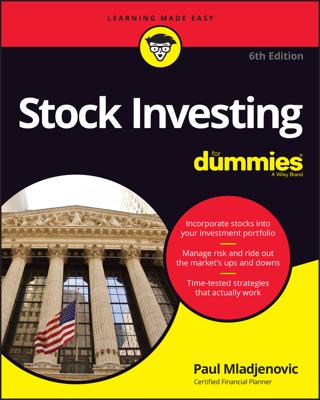A good-til-canceled (GTC) order is the most commonly requested stock order by investors. The GTC order means just what it says: The order stays in effect until it’s transacted or until the investor cancels it. Although GTC orders are time-related, they’re always tied to a condition, such as the stock achieving a certain price.
Although the order implies that it can run indefinitely, most brokers have a limit of 30 or 60 days (or more). By that time, either the broker cancels the order or contacts you (usually by e-mail) to see whether you want to extend it. Ask the broker about his particular policy.
GTC orders are always coupled with condition-related orders. For example, you think ASAP Corp. stock would make a good addition to your portfolio, but you don’t want to buy it at the current price of $48 per share. You’ve done your homework on the stock, including looking at the stock’s price-to-earnings ratio, price-to-book ratio, and so on, and you decide you would only buy it at $36 per share.
How should you proceed? Your best bet is to ask your broker to do a GTC order at $36. This request means that your broker will buy the shares if and when they hit the $36 mark (unless you cancel the order). Just make sure that your account has the funds available to complete the transaction.
GTC orders are very useful, so you should become familiar with your broker’s policy on them. While you’re at it, ask whether any fees apply. Many brokers don’t charge for GTC orders because if they happen to result in a buy (or sell) order, they generate a normal commission just as any stock transaction does. Other brokers may charge a small fee (but that’s rare).
To be successful with GTC orders, you need to know the following:
When you want to buy: In recent years, people have had a tendency to rush into buying a stock without giving some thought to what they could do to get more for their money. Some investors don’t realize that the stock market can be a place for bargain-hunting consumers.
If you’re ready to buy a quality pair of socks for $16 in a department store but the sales clerk says that those same socks are going on sale tomorrow for only $8, what do you do — assuming that you’re a cost-conscious consumer? Unless you’re barefoot, you probably decide to wait.
Say that you want to buy SOX, Inc., at $26, but it’s currently trading at $30. You think that $30 is too expensive, but you’d be happy to buy the stock at $26 or lower. However, you have no idea when (or whether) the stock will move to your desired price. In this case, a GTC order is appropriate.
When you want to sell: If a stock’s price starts to unravel, you want to be able to get rid of it as well.
Perhaps you already own SOX at $25 but are concerned that market conditions may drive the price lower. You’re not certain which way the stock will move in the coming days and weeks. In this case, a GTC order to sell the stock at a specified price is a suitable strategy.
Because the stock price is $25, you may want to place a GTC order to sell it if it falls to $22.50, to prevent further losses.

